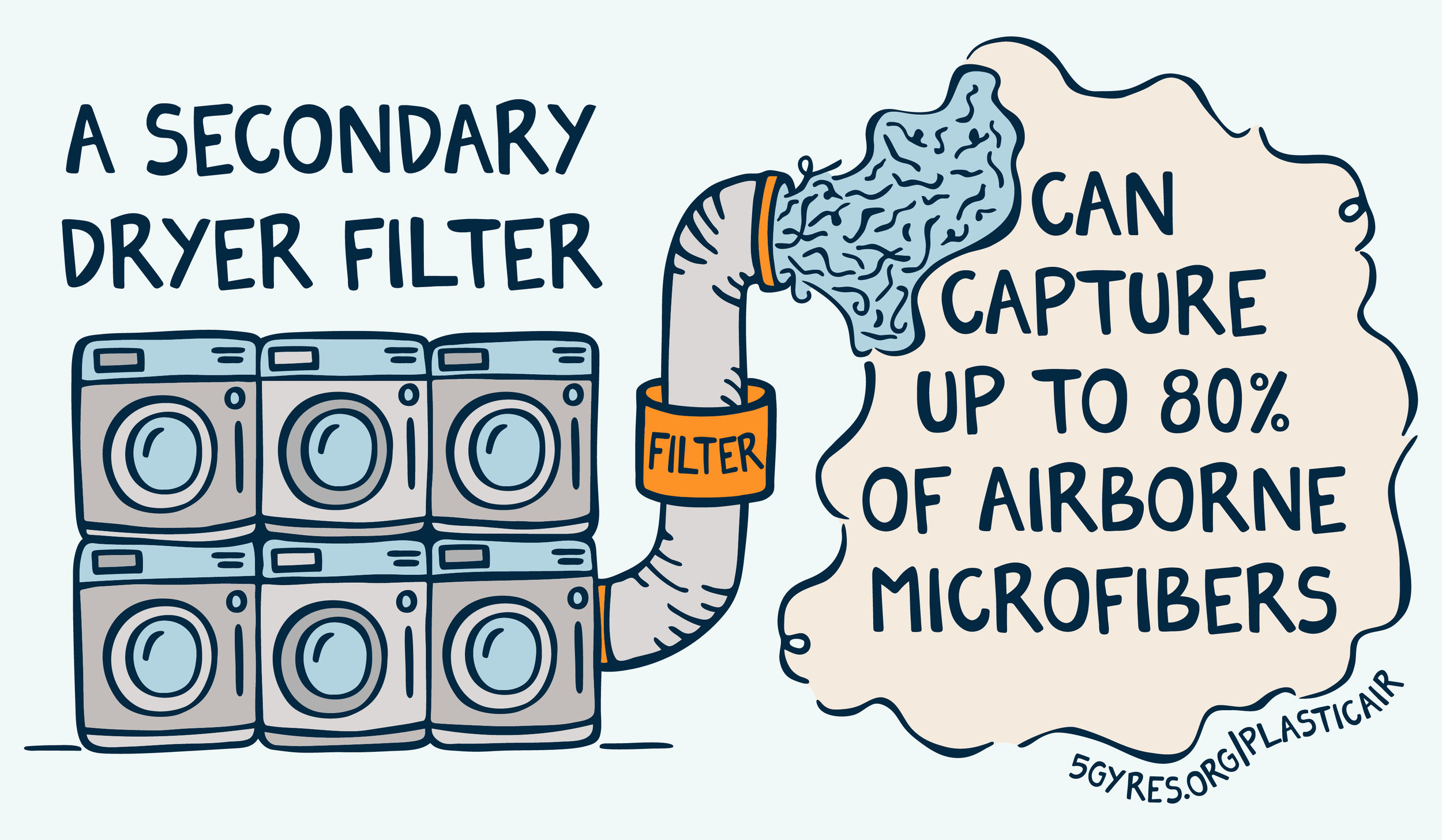PLASTIC AIR

Understanding Sources & Solutions of Airborne Microfiber Pollution
PLASTIC SMOG ALERT:
A single laundromat can release up to 7.2 trillion microfibers into the air each year.
Microplastics are contaminating our planet and bodies. One major source of these pollutants is microfibers—tiny, thread-like particles that shed from textiles, such as clothing. Because microfibers are lightweight and small, they can easily become airborne and travel long distances. This makes them especially relevant to human exposure, as they can be inhaled and enter the respiratory system. Research by 5 Gyres found that commercial dryers are a significant and overlooked source of airborne microfiber pollution.
THE SOLUTION: FILTRATION
5 Gyres evaluated the efficacy of secondary dryer filtration systems, finding that some can capture up to 80% of microfibers before they enter the air. If every household used the most effective filter tested, it could reduce microfiber emissions by up to 570 trillion annually — although this is likely a conservative estimate. Filtration presents a viable mitigation strategy to reduce microfiber emissions and protect environmental and human health.
KEY TAKEAWAYS
Microfibers are a form of microplastic that dominate indoor and urban air.
Airborne microfiber emissions pose a threat to human health due to their potential to enter the respiratory system. Recent studies have detected microfibers in human lung tissue, placenta, and even the brain, where fibers may reach the brain’s olfactory bulb via the nasal passage.
A single laundromat can release up to 7.2 trillion microfibers into the air each year, with city-wide emissions reaching 1.1 quadrillion microfibers annually.
Clothes dryers are a signficant and overlooked source of airborne microfiber pollution, and targeted solutions are needed to filter and capture fibers before they enter the air.
Secondary dryer filters can capture up to 80% of microfibers before they enter the air, presenting a viable mitigation strategy to reduce microfiber emissions and protect environmental and human health.







